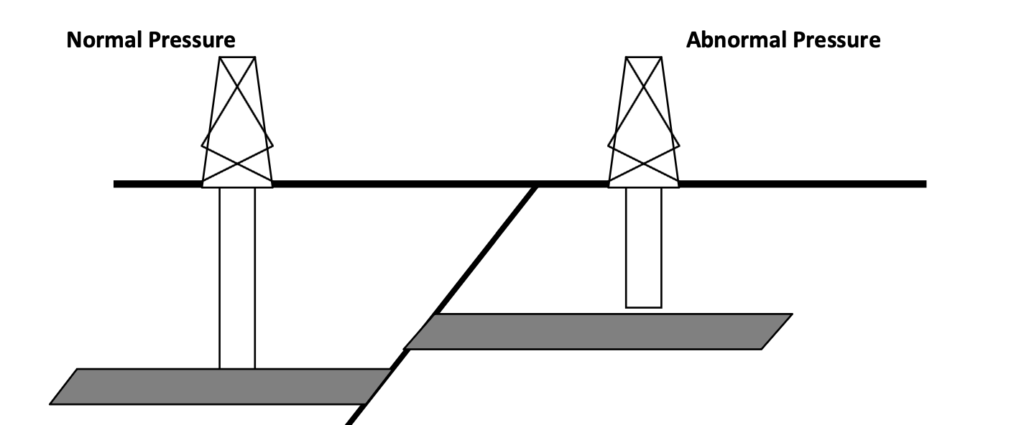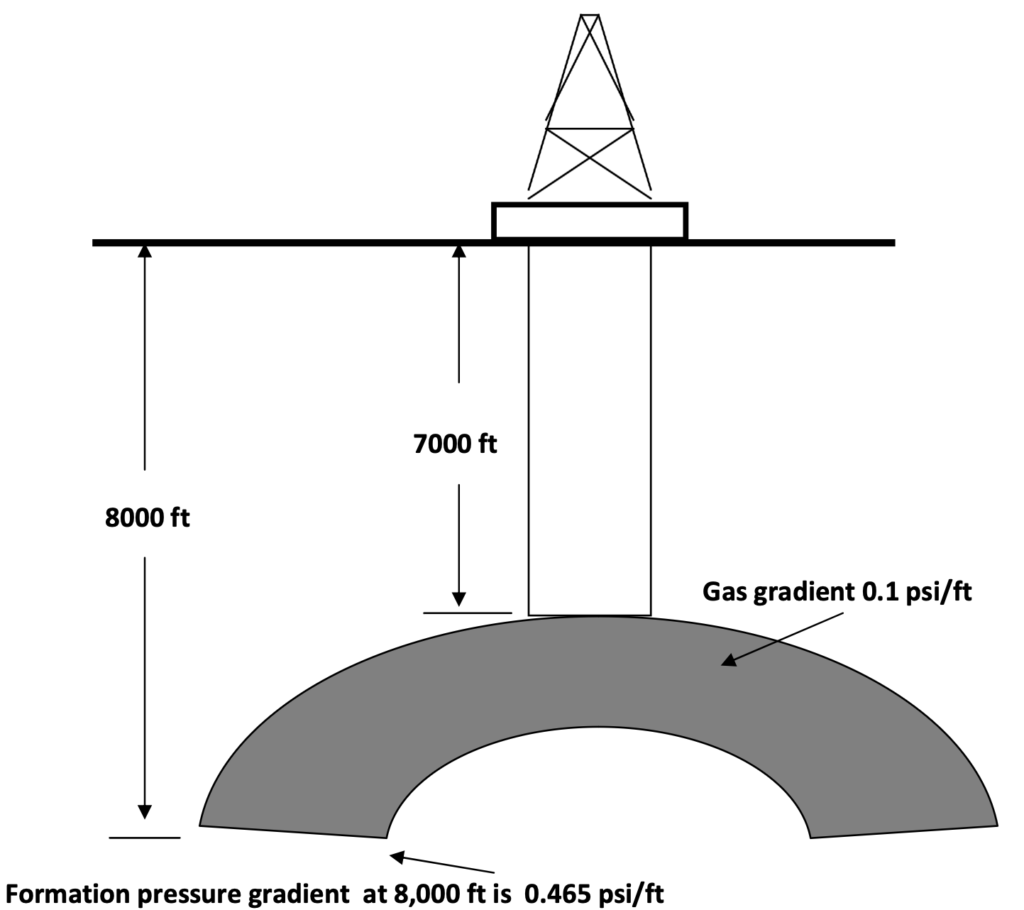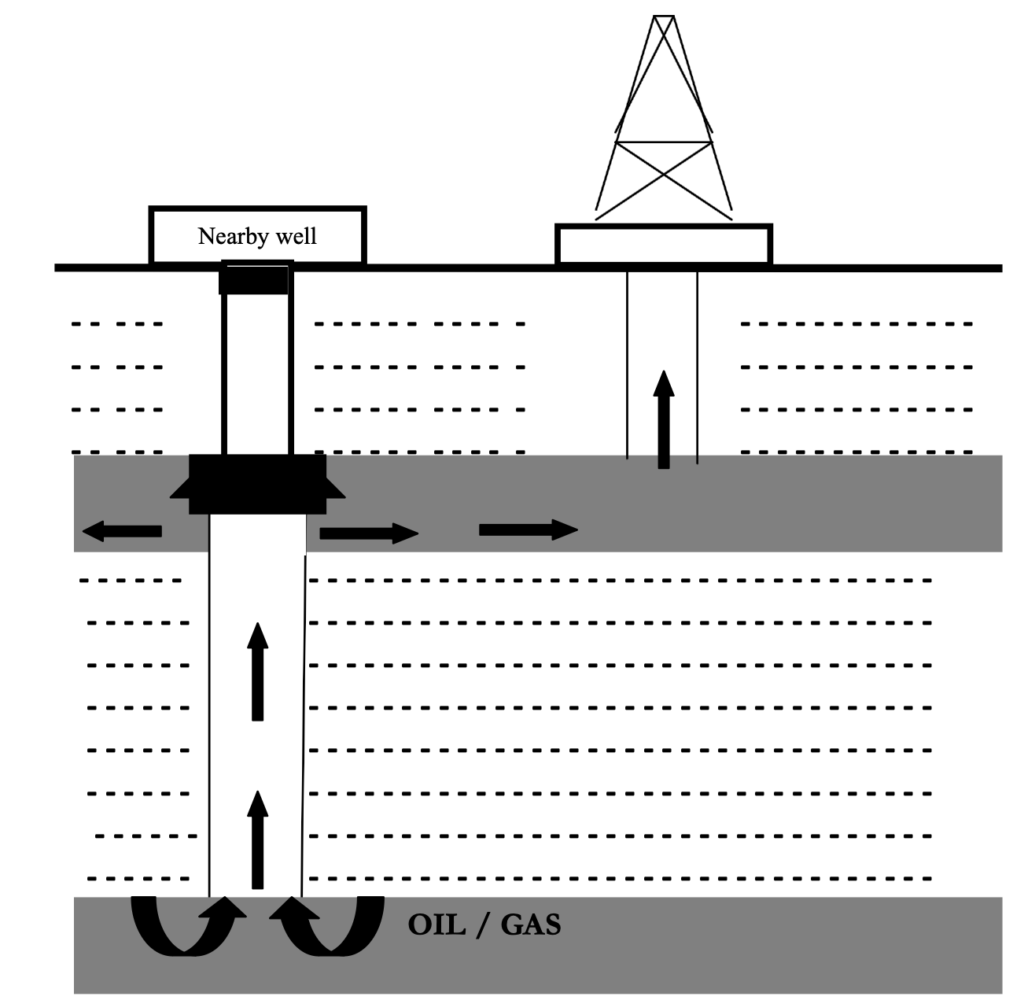As the rock layers are deposited one upon another, formation water is squeezed out of the pores due to the overburden. This process is called compaction. As long as the formation water has escape avenues, the formation pressure bleeds down to the ‘normal value’. The generally accepted normal value is ranging from 0.433 to 0.465 psi/ft. as determined from studies done in the basins of gulf coast of the united states. This is equivalent to hydrostatic pressure gradient of a column of salt water.
When formation water, which is trying to escape due to overburden is trapped by impermeable formations which does not allow its normal escape, abnormal formation pressure develops. This is because the water now supports more of the overburden than in the normal case. Basically, in any given situation the overburden is supported by both the formation fluid & the matrix of the rock
or Overburden pressure = matrix stress + pore pressure
Matrix stress is the amount of overburden pressure that is supported by the rock itself & pore pressure is the amount of overburden which is supported by the fluid in the pore spaces of the rock. The sum of the two is necessary to support the overburden.
If the normal overburden gradient is taken as 1.0 psi/ft (assuming average rock density of 19.66 ppg, though it is somewhat less at shallow depths ) and the normal pore pressure gradient as 0.465 psi/ft then the normal matrix stress gradient works out to be 0.535 psi/ft. Abnormal pore pressure gradient ranges from 0.465 psi/ft to 1.0 psi/ft. Whereas, subnormal pressure are pore pressure gradients less than 0.433 psi/ft, such pressure are usually found in depleted reservoirs.
CAUSES OF ABNORMAL PRESSURES
Under Compaction
Compaction of sediments originally deposited as clay and loose sand is an ongoing process. With the passage of time the excess water gets squeezed out from the sediments. If the process is slow and gradual, excess water can escape to surrounding formations & full compaction results. However, if rate of depositions is high, formation water may not be able to escape at a proportionate high rate & shall then support more part of the overburden. Such formation shall have abnormal pore pressure.
Though with geological time such abnormal pore pressure will dissipate into neighboring permeable formations, but deep inside the clay-body escape of formation water becomes progressively inhibited due to reduction in porosity caused by the compaction process. These shale in which pore fluid is trapped by this mechanism has a higher fluid content then the similar shale which have been compacted slowly. These shale have relatively high porosity and abnormal pore pressures. This phenomena is called ‘under compaction’ since it results from lack of normal compaction process.
Artesian Effect
When an aquifer or water bearing permeable rock outcrops at the surface, high up in a mountain area, then the formation fluids at any depth within the rock are under a hydrostatic pressure which is equivalent to the height of the outcrop. Therefore, the formation fluid in the valley below shall be abnormally pressured.

Artesian Effect
As shown in figure above, the permeable formation has outcropped at higher altitude.
While drilling in the valley below, at 3,000 ft the formation pressure shall be:
0.465 x 4,000 = 1,860 psi ( assuming normal formation pressure for depth of 4,000ft) Formation pressure gradient at 3,000 ft well depth = 1,860 / 3,000 = 0.62 psi /ft This is more than normal pressure gradient value of 0.465 psi/ft and hence abnormal.
Faulting
Faulting is up-thrusting of deep rocks. Most rocks are fractured during earth crust movement, resulting in cracks called joints. If the rock layers on one side of a fracture have moved as shown in figure 1.2 in relation to the other side, the fracture is called a fault. Displacement of formations may range from only a few centimeters to kilometers. Since the formation pressure normally increases with depth, when deep rocks get faulted up, they have higher than normal pressure with respect to the new depth they now occupy. Therefore, when drilling across a fault, there is a possibility of encountering abnormally high formation pressure.

Faulting
Salt Dome
Salt is totally impermeable to fluids, and unlike other rocks transforms physically under pseudo- plastic movements, thereby exerting pressure equal to the overburden load in all directions. Since salt has very little rock frame structure the properties of pressure transmission are more like fluids than solids.

Salt Dome
Moreover as it has little strength and underlying formations have no fluid escape possibilities, the water in the shale just below the salt bears the entire burden of the salt plus the burden of sediments above, which together can approach 1 psi/ft. In the salt dome areas, movement of salt upwards brings strata from deeper depth to shallower depth and causes abnormal pressures.
Gas Cap Effect
Most of down hole formations are dipping or folded reservoirs. In a folded permeable formation, formation pressure at various places across the fold, though in direct communication to each other, varies depending upon the nature of the fluid trapped in the pores. Difference in the density between the gas and water causes the abnormal pressures where hydrocarbon occur above water. The magnitude of this pressure depends upon the structural elevation of the top of the hydrocarbon reservoir. As shown in the below figure the reservoir fluid being gas is lighter than water, an abnormal pressure gradient will be encountered on drilling into the shallow section of the reservoir.

Gas Cap Effect
Charged Sand
Upper sands can get charged with formation fluid much greater than normal for their depth due to uncontrolled underground blow-out from a previous well. As shown in the figure 1.5 the previous well that blew out underground was successfully abandoned , but the fluid from the lower zone entered the wellbore & escaped to an upper sand. When the next well is drilled, unexpected shallow high pressure sand is encountered.

Abnormal Pressure due to Charged sand
You can learn more about oil well Drilling at http://oilwellconsultancy.com
Disclaimer: General reading purpose only.